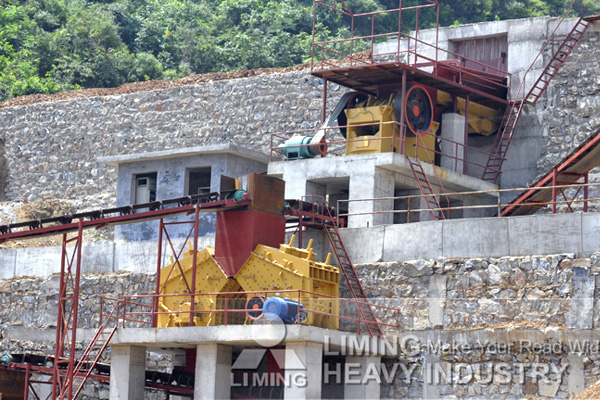A stationary stone crushing plant, also known as a static crushing plant, is a facility that is designed to crush rocks and stones into smaller sizes for various construction purposes. This type of plant is fixed and requires a permanent foundation and infrastructure to operate. In this article, we will discuss the design considerations for a stationary stone crushing plant.
Site Selection: The first step in designing a stationary stone crushing plant is selecting an appropriate site. Factors such as proximity to raw material sources, transportation access, and compliance with environmental regulations should be considered. The site should also have sufficient space for the plant layout, stockpiling of materials, and future expansion if required.
Equipment Selection: The selection of crushing equipment plays a crucial role in plant design. It is important to choose crushers that are suitable for the type of stone to be crushed and the required product specifications. Commonly used crushers include jaw crushers, impact crushers, cone crushers, and gyratory crushers. Each type of crusher has its own advantages and limitations, and the selection should be based on factors such as feed size, hardness, and desired output.

Plant Layout: The layout of the crushing plant should be designed to maximize efficiency and minimize the distance that material needs to be transported between different stages of the crushing process. The primary crusher should be located close to the quarry or mining area to minimize transportation costs. Conveyors and transfer points should be carefully positioned to ensure a smooth flow of material.
Crushing Process: The crushing process consists of several stages, including primary crushing, secondary crushing, and tertiary crushing. Each stage serves a specific purpose in reducing the size of the stone to the desired level. The selection of crushing stages and their arrangement should be optimized to achieve the desired product shape and size while maximizing production capacity.
Screening and Grading: After the crushing process, the crushed stones need to be screened to separate them into different sizes. This is typically done using vibrating screens that have different-sized openings. The screened materials can then be further processed or stockpiled based on their size and quality. Proper screening and grading are essential to ensure that the final product meets the required specifications.
Dust Control and Environmental Considerations: Crushing operations can generate a significant amount of dust, so it is important to implement effective dust control measures. This may include installing dust suppression systems, enclosing the crushing area, and using water sprays. Additionally, the plant design should consider minimizing noise and vibrations to reduce the impact on the surrounding environment and nearby communities.
Maintenance and Safety: The design of the stationary stone crushing plant should prioritize ease of maintenance and safety. Adequate access should be provided to all equipment for inspection, maintenance, and repair. Safety features such as emergency stops, guards, and warning signs should be incorporated into the plant design to ensure the well-being of the operators and maintenance personnel.
In conclusion, designing a stationary stone crushing plant requires careful consideration of various factors, including site selection, equipment selection, plant layout, crushing process, screening and grading, dust control, and maintenance and safety. A well-designed plant will contribute to efficient and sustainable stone crushing operations, meeting the required specifications while minimizing environmental impacts.
